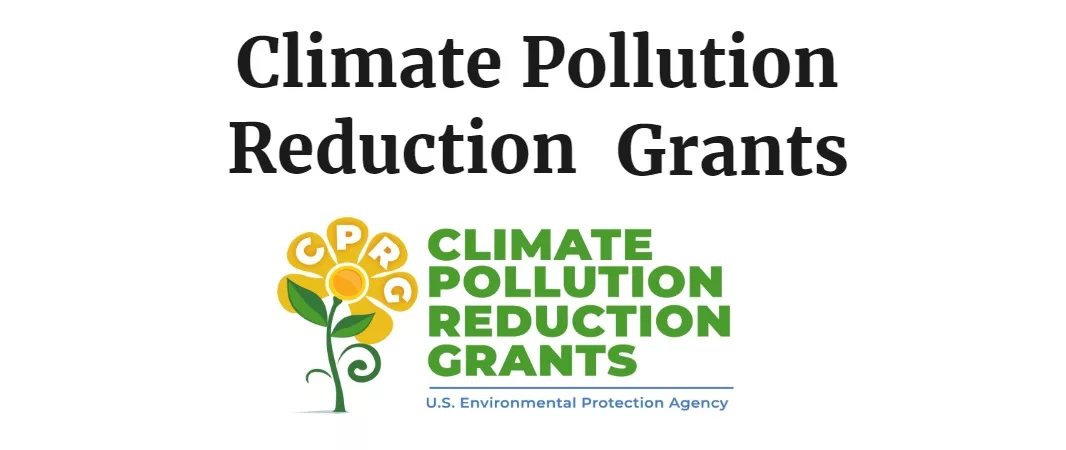
OLYMPIA, WA – Washington communities now have a guide to secure some of the $4.6 billion in federal Climate Pollution Reduction Grants implementation funding for greenhouse gas reduction measures. The Department of Commerce released Washington’s Priority Climate Action Plan, which lays the groundwork for propelling the state toward connected, effective, and equitable climate solutions.
From the Washington Department of Commerce:
Commerce worked with the state Department of Ecology on the PCAP, which was funded by a $3 million CPRG planning grant from the Environmental Protection Agency. The PCAP was a collaborative effort informed by state, local and tribal governments; environmental and community groups; business and industry associations; state residents; and others. It is the first of three related deliverables.
“The PCAP serves a dual purpose: It shows us what steps we’ve already taken and what more we have to do to achieve the state’s climate goals,” said Commerce Director Mike Fong. “Its release represents a deliberate advancement in our state’s approach to collaborative and equitable climate action.”
The PCAP includes near-term, high-priority and implementation-ready measures to reduce greenhouse gas emissions and harmful air pollution across sectors and state agencies, from improving energy systems on college campuses to preventing food waste. Many of the quantified priority measures contained in this PCAP are based on existing state, local and tribal climate and clean energy plans and programs, and it aims to maximize the benefits of climate action in overburdened communities.
Greenhouse gas emissions remained steady or declined as population grew by 24%
Washington has grown almost 24% since 2005. Despite that growth, state’s greenhouse gas emissions have held relatively steady, and the amount of GHGs per person declined 15%. The state has reduced its carbon intensity as measured in terms of emissions per capita or per economic output (Gross Domestic Product or GDP). Relative to 2005, the amount of greenhouse gas emissions per million dollars of GDP declined 51%. The PCAP will help guide the state to continue reducing emissions.
“This work will allow us to take swift action on climate change by laying out our top-priority shovel-ready projects that cut greenhouse gas emissions in Washington and get us closer to net zero by 2050,” said Joel Creswell, manager of the Department of Ecology’s Climate Pollution Reduction Program.
The state works closely with the Puget Sound Clean Air Agency, which is the lead agency for the Seattle-Tacoma-Bellevue Metropolitan Statistical Area’s (MSA) CPRG program. The MSA covers King, Kitsap, Pierce and Snohomish counties, which comprise almost half of the state’s population. The Puget Sound Clean Air Agency released its own PCAP with steps to reduce climate and air pollution across the central Puget Sound region. These measures that will also help the state reach its targets.
“Our partnership with the state of Washington demonstrates our collective determination to accelerate climate action at all levels of government,” said Puget Sound Clean Air Agency CPRG program manager Sara Hetrick. “The impacts of climate change are already being felt by Puget Sound residents, and ensuring an equitable energy transition for our most vulnerable communities is paramount to the state and MSA’s CPRG programs.”
- Learn more about EPA’s Climate Pollution Reduction Planning Grant.
- Access PCAPs from other states, municipalities, tribes, and territories.
What’s in the Priority Climate Action Plan?
The PCAP is a unifying statewide plan. It underscores the state’s central role in identifying, prioritizing and implementing climate pollution reduction policies and technologies. It sorts Washington’s diverse priorities and insights into a set of ready-to-implement measures that are actionable, supported and in alignment with broader state goals around greenhouse gas reductions and environmental justice.
The PCAP contains actionable strategies based on scientific and policy context. The strategies build upon actions that are already occurring across Washington. The major strategies include:
- Identifying 12 priority actions for greenhouse gas reduction. These actions can be implemented within the next five or six years and include five sectors: buildings, waste water and sustainable materials management, transportation, electrical power, and agriculture.
- Supporting tribal energy sovereignty through Tribal Clean Energy grants. This includes funding for federally recognized tribal governments and tribes’ contracted service providers.
- Conducting a benefit analysis for low income and disadvantage communities, including benefits such as access to healthy food and increased transportation options.
- Identifying strategies to ensure job quality, strong labor standards, and a diverse, highly skilled workforce to implement priority measures.
With the PCAP complete, Washington can apply for additional CPRG implementation funds. These funds can be used by the state, tribal governments, and multi-jurisdiction partnerships to implement greenhouse gas reduction measures. The next deliverable is the Comprehensive Climate Action Plan (CCAP), which will explore all sectors and sources of greenhouse gas emissions in Washington. It’s due in summer 2025.
What’s next?
Throughout 2024 and 2025, the state will continue engaging with agencies, local governments, subject matter experts, tribes, and the public to build the Comprehensive Climate Action Plan and ensure a strong policy framework for the near-term and long-term climate pollution reduction actions.
Interested residents, businesses, nonprofits, tribes, and local jurisdictions are encouraged to follow CPRG activities by visiting the program website, subscribing to Commerce Energy Updates, and participating in future engagement opportunities, which will be made available via email and on the agency website.

